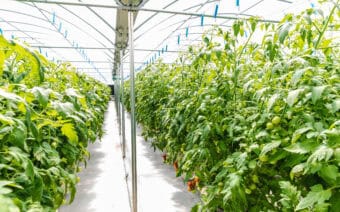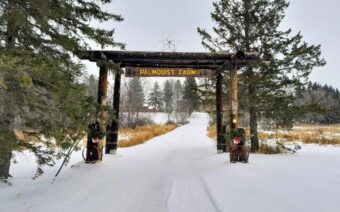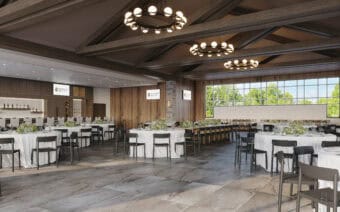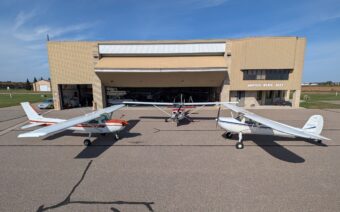
November 10, 2025
STELLA – Though Wellens Tree Farm in Stella – located at 2200 Spring Drive just east of Rhinelander – has only allowed families to cut their own Christmas trees since 2023, Owners Steve and Ann Wellens said the farm’s story began more than 15 years ago.
That’s when the Wellens said they purchased a 40-acre parcel of land and began planting Fraser and balsam firs.
Today, the couple said the property is home to roughly 25,000 Christmas trees, including the newer addition of Canaan fir.
“Originally, we’re both from southeast Wisconsin,” Ann said. “We both had careers in law enforcement, but we always knew we would move ‘up north’ eventually. That was always a goal of ours, and we wanted to do something after retiring that would keep us busy.”
Though turning the 40 acres into a tree farm wasn’t originally in their plans, Steve said a conversation with the man who eventually sold them the land changed their minds.
“When the land suddenly became available, we talked to the man selling it, and he said, ‘You know, the soil is perfect for growing conifer trees,’” he said. “At the time, it was just flat farmland, but as soon as he mentioned that, it started the ball rolling.”
Steve said another conversation with a coworker at the time gave him and Ann the confidence to start growing Christmas trees.
“His aunt and uncle had a Christmas tree farm in the central part of the state, and he offered to give them a call to see if we could visit their farm,” he said. “We visited with them, and then we started researching, reading books and talking to as many people as we could. After doing all of this, we figured if we bought the land, we could make a go of growing Christmas trees.”
When they bought the land, Steve said both he and Ann were still working full-time in law enforcement and had a lot to learn about managing a tree farm.
“We were definitely rookies when we started,” he laughed. “We had a lot to learn, but slowly, over time, we’ve learned what to do.”
A labor of love
Typically, Steve said it takes eight or nine years for a tree to reach seven or eight feet.
“They’re about a foot tall when we put them in the ground and maybe grow 10 inches to a foot per year,” he said.
Steve said they lost about a third of the trees they planted their first year, due to deer.
“We found out the deer in the area really like balsam and Fraser trees,” he laughed. “That put us back a bit – we had to replant some we lost. Since then, we’ve put up an eight-foot-high metal fence around the trees so the deer can’t get in.”
Steve said the metal fence, which was installed in 2019, proved far more effective than the plastic fencing they had used previously.
“The deer were constantly going through [the plastic fencing],” he said. “We still lived [at that time] in Milwaukee, but when the neighbor would call and say we had 50 deer inside the fencing, we’d make the four-and-a-half-hour trip to repair the fence with our zip ties. Finally, we had enough of that and put in a better fence.”
Growing and tending to Christmas trees, Ann said, is far more challenging than many might expect.
“It’s funny, because when people say, ‘You just plant them and let them grow, right?’ – we laugh at that,” she said. “There is a lot more work involved than people realize.”
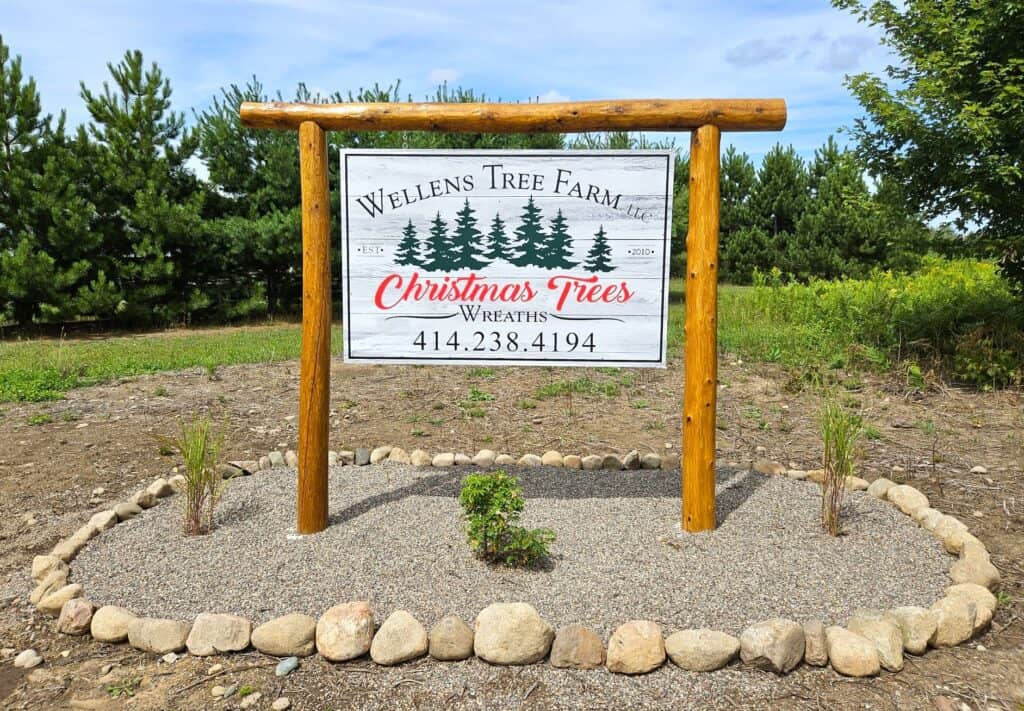
Part of that work, Ann said, is shearing the trees – which they do themselves – to give them their “Christmas-tree shape.”
“It’s all a part of that labor of love,” she said. “We plant in the spring and then fertilize every tree by hand – we feel we get better coverage that way. Once we finish fertilizing, we start de-coning the trees. There might be 20 cones on a tree or you could have 400 cones.”
After de-coning, the couple said they get a short break before shearing begins.
“That’s what puts the trees into the shape people want,” Ann said. “Shearing makes them a little fuller and denser and is the majority of our work during the year.”
Even during the slower months of June and July, the couple said the work keeps coming.
“During that downtime, we’re mowing and trying to keep the weeds down and insects away,” Steve said. “Also, for the last three years, we had to hand-water the baby trees we just planted to give them a good start. We have to make sure they’re getting the water they need.”
Initially, the couple said they planted around 2,400 trees each year.
“In 2020, we started scaling back,” Steve said. “Because Ann and I are the only ones shearing the trees, it was starting to be too much for us. Even now, we can’t get all of the trees sheared before winter hits, so some of the remaining trees will be sheared in early spring when the weather warms up.”
At one point, Steve said there were hopes of having employees, but so far, that hasn’t been the case.
“Basically, [if we had to pay a bunch of employees], the profit margin wouldn’t be there for us,” he said. “Ann and I try to do as much as we can, and then we have help during harvest time from family and friends, who we are very appreciative of.”
The couple said Wellens Tree Farm opens Black Friday – this year, Nov. 28 – and remains open well into December.
“Generally speaking, it’s Black Friday weekend and the first two weekends in December,” Ann said. “We play it by ear to see if we open the fourth weekend, because usually by then up here, the snow starts flying and it gets pretty cold.”
On the weekends they are open, Ann said the tree farm welcomes visitors from 9 a.m. to 4 p.m. Friday through Sunday.
“Most of our sales are probably Fraser fir – about 60%,” Steve said. “There is no perfect tree for everyone. The balsams have a little more scent, while the Frasers last a little longer. When people ask which tree they should pick, we always say, ‘Whichever one works for you.’ What may be right for us may not be right for you.”
In addition to trees, the farm offers wreaths, swags and porch pots, which Ann said she makes.
“I always have a bunch on display for people,” she said. “I’ll have old-fashioned sleds – like the metal ones when we were kids – with some swags on. I have quite a variety.”
The number of trees they sell per season, Steve said, depends on several factors.
“We also wholesale, and depending upon what the wholesale order is – it depends on the season – each year varies,” he said. “During some years where you’re fighting drought, and if some of the trees aren’t looking where you want them, we don’t want to go too much longer into the season because then we’re cutting into next year’s harvest.”
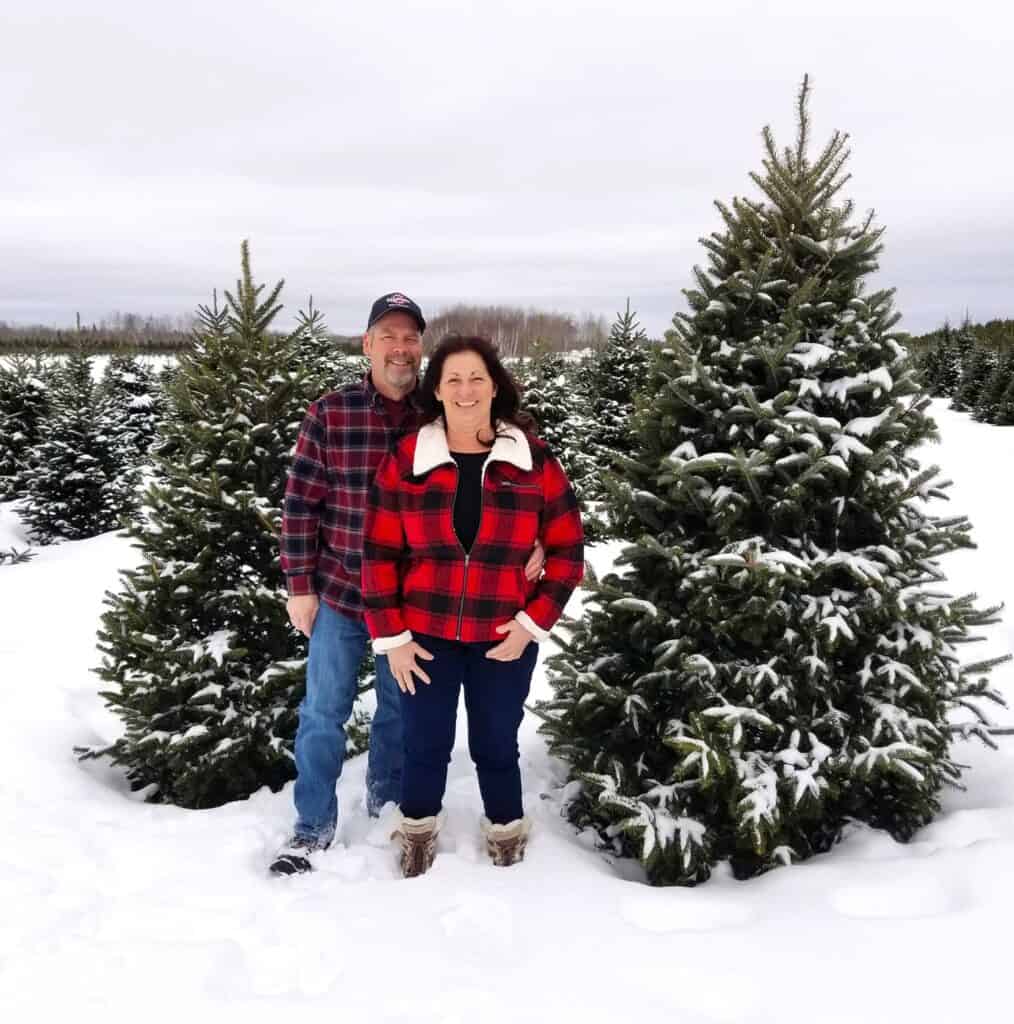
‘It’s an experience’
Ann said for her, the true joy of a visit to Wellens Tree Farm isn’t just the tree itself, but the hands-on experience of cutting it down.
“It’s a different experience when you cut your own tree,” she said. “Through my eyes, it’s more of a family experience. You get to go into the field with the saw and wander around and pick your tree. Once you have it picked out, you bring it back to our building, and Steve gets it ready for you.”
While families wait for Steve to ready their tree for transport, Ann said the farm has other opportunities to make memories.
“You can come in by me and get a cup of hot cocoa and a candy cane,” she said. “You’re building memories that way. We also have an old sleigh where people can sit in and take photos and an old truck you can take photos in front of. This year, we’re doing a display with a six-foot wreath where people can also get photos.”
More details are available at wellenstreefarm.com or on Wellens Tree Farm’s Facebook page.
 Ashwaubenon Bowling Alley installs Neoverse LED video wall
Ashwaubenon Bowling Alley installs Neoverse LED video wall Black & White: An ode to the sustainable black and white Holstein cow
Black & White: An ode to the sustainable black and white Holstein cow



